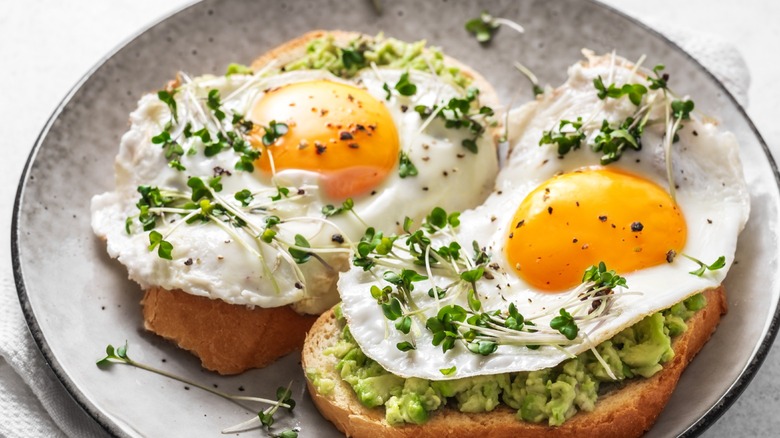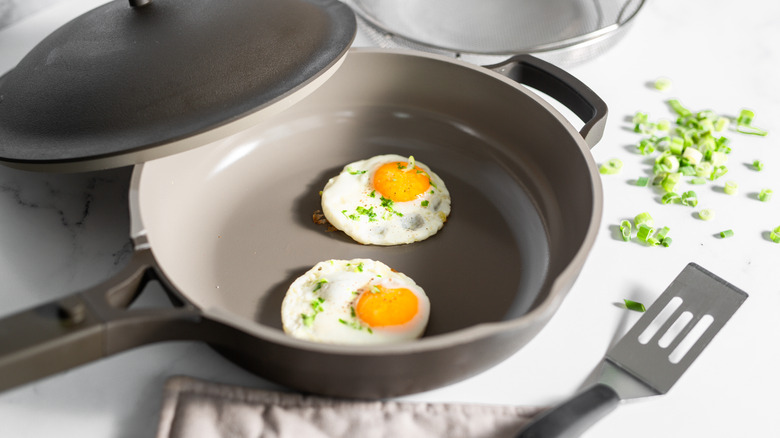For Tender Fried Eggs, Add A Splash Of Water
If you dream of that transcendent brunch tablescape complete with a dish of kicked-up avocado toast on an herb-strewn plate below a bright, circular egg with a sunny yolk right in the middle, this article is for you. Those tender, bright whites without overdone edges are second only to dancing sugar plumbs on every gastronome's vision board.
And the method is straightforward as it is effective. Call it water-frying; call it steaming. It will never be late for dinner thanks to its ability to reliably fry egg after egg to supple perfection. Start by frying your eggs over medium heat in just enough fat to coat the bottom of a nonstick pan (a couple of teaspoons). Quickly season the eggs while you let them set for 30 seconds, then pour in about a tablespoon to ⅓ cup of water, quickly covering the pan with a lid to trap in steam. It may take a few eggs to nail down how much water to use for your pan size and desired doneness. There's no exact formula.
It's kind of a cross between frying and poaching. The steam created in the hot pan envelopes the eggs, gently and evenly cooking the tops of the egg whites. Since you don't have to flip them, the tops don't get browned, and the gentle heat can cook the whites through and the yolks to your desired doneness without the whites becoming rubbery.
The pros and cons of steam-frying eggs
The benefits of this method are more than just aesthetic. Since you need less oil or butter, you reduce the amount of saturated fat in the overall dish. That kind of control is important for those wishing to balance fat with other micronutrients, especially if you're having it on something like avocado toast. Additionally, steam leads to even cooking all the way through. And that means you don't have to flip the eggs, risking the dreaded yolk break in the home stretch.
But it's not without its drawbacks. Probably most significant is that some people actually like that ring of perfectly crisp butterfat that forms around a fried egg. Steam makes that virtually impossible. There's also a learning curve based on your stove's performance and how you like your yolks cooked. If you have the heat too high or run out of steam too quickly, you risk overcooking or unevenly cooking the egg white.
But it only takes a few attempts to nail down the technique, and once you have it down, world, watch out! Thanks to this technique's reliability, you can batch-cook perfect eggs or just have eggs exactly the way you like them while you sip your morning coffee and scroll through your newsfeed.

